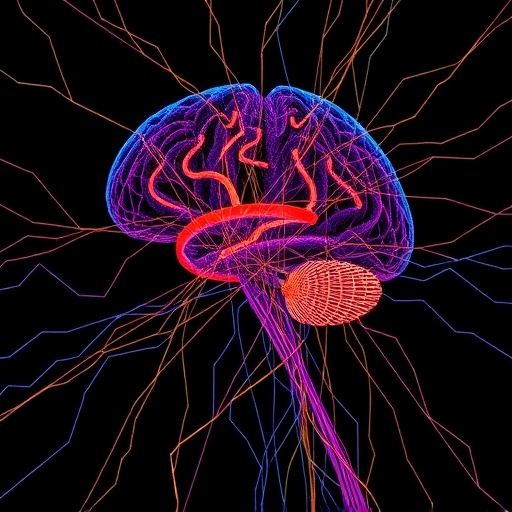WASHINGTON – While health care has made great strides in recent years with the proliferation of electronic health records (EHRs), establishment of regional health information exchanges, and development of data exchange standards and interfaces, interoperability among health care technologies remains very limited, says a new National Academy of Medicine (NAM) special publication. The lack of interoperability results in waste, inefficiency, and clinician burnout, which can contribute to patient safety risk.
Digital interoperability across clinicians, care units, facilities, and systems has become more essential because of increasing complexity in health care, the need for more seamless interfaces among clinicians, patients and families, and the growing number of clinicians across disparate specialties that a typical patient sees. Authored by leading national experts on health information technology, clinical operations, and health care delivery, the publication outlines steps for health systems to establish comprehensive, ongoing procurement strategies with system-wide interoperability by moving away from serial purchases of individual software and hardware with proprietary interfaces toward those that will interoperate with others through a vendor-neutral open platform.
Interoperability is the ability to seamlessly and automatically deliver data across time and space from and to multiple devices and organizations. As of 2016, 96 percent of hospitals and 78 percent of physicians' offices were using EHRs, the publication says. However, due to lack of interoperability, information from multiple sources, devices, and organizations across the care continuum are unable to flow at the right time, to the right party, and for the right patient. For example, less than one in three hospitals is able to electronically find, send, receive, and integrate patient information from another provider, leaving most providers relying on paper or fax when sending a care summary for patient discharges or referrals.
Unlike in other industries where computerization has made work easier, deployment of EHRs in their current state–coupled with growing requirements for high-quality reporting and regulatory compliance–create additional work and exacerbate clinician burnout, the publication says. In addition to staff time spent manually entering readings, such as vital signs, from a device onto paper or electronic charts, another common source of inefficiency is time spent manually programming devices such as infusion pumps. A 2013 report by West Health Institute estimated that widespread medical device interoperability could eliminate at least $36 billion of waste in inpatient settings alone by, for example, reducing redundant testing, reducing clinician time spent manually entering information, and shortening length of stay through more timely transmission of critical information, such as lab tests.
Suboptimal system acquisition processes in the current marketplace contribute to data silos, hoarding, and blocking, the publication says. Hospitals and other health care providers purchase systems and equipment from a variety of different manufacturers, and frequently, each comes with its own proprietary interface technology. As a result, most health care providers spend time and money setting up each technology in a different way, instead of being able to rely on a consistent means of connectivity. Health care providers also purchase technology that will work for their system, without considering the systems that interact with their own, or the systems that their patients are connected with. These technologies often cannot transfer data to one another, resulting in the need for patients and clinicians to expend energy collecting and collating multiple sets of data.
Although the proportion of patient harm that is directly attributable to the lack of interoperability is unknown, several common causes of medical errors, including drug errors, diagnostic errors, and failure to prevent injury, can partially be addressed by better data exchange among patients, medical devices, EHRs, and other health technologies.
"To ensure that health care dollars are spent in pursuit of health care delivery systems reaching desired levels of care quality, safety, and efficiency, interoperability must be a top priority," said Victor J. Dzau, president of the National Academy of Medicine. "Only then will the health care industry begin to create truly integrated care systems that continuously provide better experiences for clinicians and patients while achieving better health and health care at a lower cost. The time is now to realize the true potential of health information technology, and all health care organizations have an obligation to see this through so that future generations will lead better, healthier lives."
The publication contains a technical supplement that details approaches for health care organizations to ensure interoperability, including creating an organization-wide steering group, a long-range road map, an interoperability needs identification process, and a procurement specification process.
The special publication was sponsored by the Gordon and Betty Moore Foundation. The National Academy of Medicine, established in 1970 as the Institute of Medicine, is an independent organization of eminent professionals from diverse fields including health and medicine; the natural, social, and behavioral sciences; and beyond. It serves alongside the National Academy of Sciences and the National Academy of Engineering as an adviser to the nation and the international community. Through its domestic and global initiatives, the NAM works to address critical issues in health, medicine, and related policy and inspire positive action across sectors. The NAM collaborates closely with its peer academies and other divisions within the National Academies of Sciences, Engineering, and Medicine. The views presented in this special publication – "Procuring Interoperability: Achieving High-Quality, Connected, and Person-Centered Care" – are those of the authors and do not represent formal consensus positions of the NAM; the National Academies of Sciences, Engineering, and Medicine; or the authors' organizations.
###
Resources:
http://www.nam.edu/interoperability
Contacts:
Dana Korsen, Media Relations Officer
Andrew Robinson, Media Relations Assistant
Office of News and Public Information
202-334-2138; e-mail [email protected]
http://national-academies.org/newsroom
Twitter: @theNAMedicine
Facebook: @NAMedicine
Instagram: thenamedicine
Media Contact
Dana Korsen
[email protected]
202-334-2138
@theNASEM
http://www.nas.edu
http://www8.nationalacademies.org/onpinews/newsitem.aspx?RecordID=10122018




